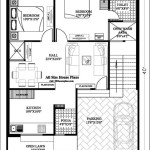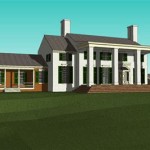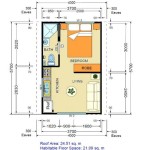Commercial Poultry House Construction Plans: A Comprehensive Guide
Constructing a commercial poultry house requires meticulous planning and execution. A well-designed structure is crucial for bird health, efficient production, and profitability. This article outlines the essential components of commercial poultry house construction plans, providing a comprehensive guide for prospective poultry farmers.
Site Selection and Preparation: The first step in any poultry house project is selecting an appropriate site. Factors to consider include access to utilities (water, electricity), adequate drainage, prevailing wind direction, proximity to roads for transportation, and local zoning regulations. Proper site preparation involves leveling the ground, ensuring proper drainage, and establishing a secure perimeter.
Building Design and Dimensions: The design and dimensions of the poultry house are determined by the type of poultry being raised (broilers, layers, turkeys), the desired stocking density, and the chosen management system. Common house types include open-sided, curtain-sided, and environmentally controlled houses. The width of the house typically ranges from 30 to 50 feet, while the length can vary considerably depending on the flock size.
Foundation and Flooring: A strong, stable foundation is essential for the longevity of the poultry house. Concrete foundations are the most common choice, providing a solid base and preventing rodent infestations. Flooring options include concrete, earthen floors, and wire mesh. Concrete floors are preferred for ease of cleaning and sanitation, while earthen floors offer a more natural environment but require more frequent cleaning.
Framing and Roofing: The framing of the poultry house provides structural support and determines the shape and size of the building. Steel framing is increasingly popular due to its durability, strength, and resistance to pests. The roof should be designed to provide adequate insulation and ventilation. Common roofing materials include metal sheets, fiberglass panels, and asphalt shingles.
Ventilation System: Proper ventilation is critical for maintaining optimal temperature, humidity, and air quality within the poultry house. The ventilation system should be designed to remove excess moisture, ammonia, and other harmful gases while providing fresh air. Ventilation systems can be natural (relying on windows and vents) or mechanical (using fans and exhaust systems). Environmentally controlled houses often utilize a combination of both.
Lighting System: Lighting plays a crucial role in poultry production, affecting bird behavior, feed intake, and egg production. The lighting system should be designed to provide the appropriate light intensity and duration for the specific type of poultry being raised. Light dimming systems are increasingly utilized to simulate natural light cycles and optimize bird performance.
Heating System: Maintaining a consistent temperature within the poultry house is essential, especially during colder months. Heating systems can range from simple space heaters to more sophisticated systems utilizing radiant heat or forced-air furnaces. The chosen heating system should be sized appropriately for the climate and the size of the poultry house.
Cooling System: In hot climates, cooling systems are necessary to prevent heat stress in poultry. Cooling methods include evaporative cooling pads, fogging systems, and tunnel ventilation. The effectiveness of different cooling systems will depend on the local climate and the design of the poultry house.
Water Supply System: A reliable and readily available water source is vital for poultry production. The water supply system should be designed to provide clean, fresh water to all birds within the house. Nipple drinkers are commonly used in modern poultry houses, minimizing water wastage and promoting hygiene.
Feeding System: Efficient and automated feeding systems are essential for large-scale poultry operations. Automated feeding systems deliver feed to the birds via a chain or auger system, ensuring that all birds have access to feed. The chosen feeding system should be appropriate for the type of poultry being raised and the size of the operation.
Manure Management System: Effective manure management is crucial for maintaining hygiene and minimizing environmental impact. Manure management systems can include litter management, composting, and anaerobic digestion. The chosen system should be appropriate for the type of poultry, the size of the operation, and local regulations.
Biosecurity Measures: Biosecurity is paramount in commercial poultry production. Construction plans should incorporate biosecurity measures such as footbaths, perimeter fencing, and designated entry and exit points. These measures help prevent the introduction and spread of diseases within the flock.
Waste Management System: Proper waste management is essential for maintaining a clean and hygienic environment. Waste management systems should include provisions for the disposal of dead birds, litter, and other waste materials. The system should comply with local environmental regulations.
Cost Considerations: Construction costs will vary depending on the size and complexity of the poultry house, the chosen materials, and the location. Developing a detailed budget is crucial for securing financing and ensuring the project remains within budget.
Regulatory Compliance: Poultry house construction must comply with all relevant local, state, and federal regulations. These regulations may cover areas such as building codes, environmental permits, and animal welfare standards. Consulting with local authorities is essential to ensure compliance.

Broiler House Design For 50000 Birds Poultry

How To Design And Set Up A Poultry Farm

Broiler House Design For 50000 Birds Poultry

Poultry House Plans For 10000 Ens One Stop Solution

Poultry Houses 197 Designs Structures Plans Systems Guide

Poultry House Construction Guidelines Value Media

Manual Plans Available Small Scale Poultry Housing In Agri4

Poultry House Design The First Business Planning Mania

Steel Structure Layers Industrial Poultry Farm Plans Commercial En Houses China House Made In Com

En Enhouse Commercial Design In Designin Agriculture Bird Poultry Farm House Buildings








